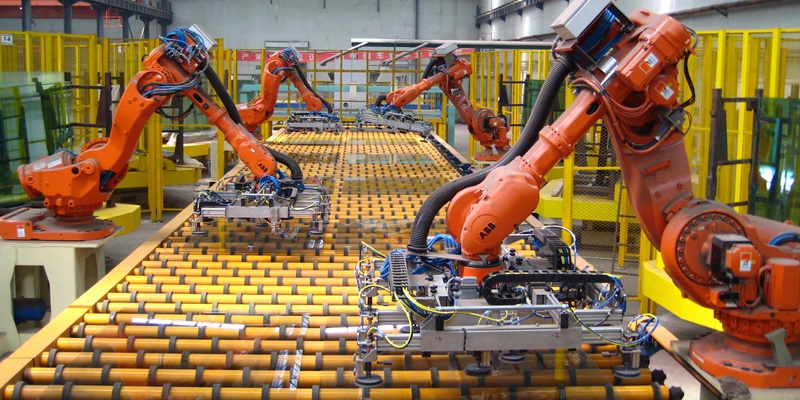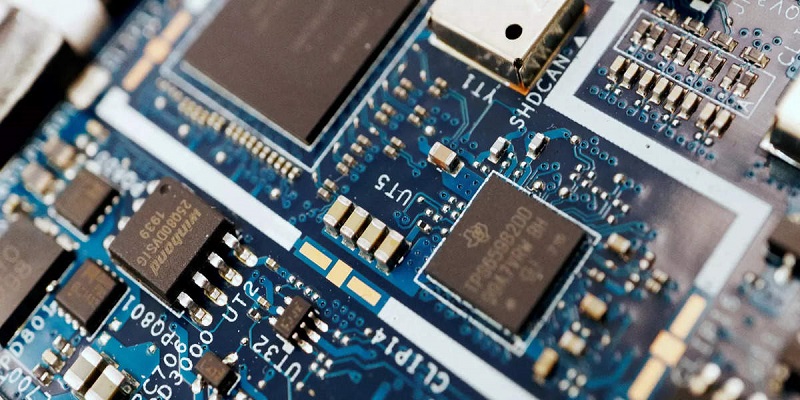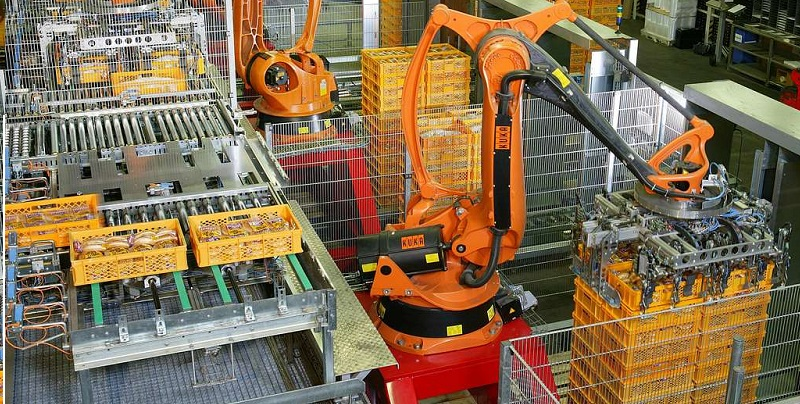Schedule a Call Back
Indian drone industry is witnessing rapid expansion: Rama Krishna
 Articles
Articles- Oct 25,24

As can be seen in the ongoing conflicts in the Middle East and Russia-Ukraine war, drones are increasingly becoming a potent tool in warfare today. In India, EndureAir Systems, incubated in the corridors of IIT Kanpur in 2019, is gearing up to provide world-class drone technology for the Indian Armed forces. In this exclusive interview with Rakesh Rao, Rama Krishna, Co-founder & CEO, EndureAir Systems (which was recently honoured with the NASSCOM Emerge50 Award in the Space & Satellite, Defence category), elaborates on the evolution of drone technology and their utilities in modern-day wars and other applications.
Kindly take us through the evolution of EndureAir.
EndureAir Systems was founded in 2018 with the goal of advancing unmanned aircraft technology by utilising our extensive R&D experience from IIT Kanpur. I, alongside, Chirag Jain (CTO & Co-founder) and Dr Abhishek, a professor at IIT Kanpur and Director at EndureAir, set out to build a business that could revolutionise the way Unmanned Aerial Vehicles (UAVs) benefit governments, corporations, and the Indian Army. We are building the concept of indigenous Heli Drones that are fully autonomous UAVs, with the aim of meeting the industry requirements.
For heavy-lift logistics operations, we designed and developed our product line, Sabal, a cargo delivery drone. The multipurpose logistics and surveillance drone, Vibhram was created for dual purpose, carrying cargo and surveillance. Alakh, a UAV for nano surveillance, is made to offer better monitoring capabilities in urgent situations.
We began with a small yet committed team that put forth endless effort to realise our ideas. Today, EndureAir employs more than 150 skilled engineers, researchers, and designers. We have obtained eight patents and published over fifty journals and conference papers over the years.
In 2019, we launched the G-Vibhram drones for the Indian Army and were honored to win the prestigious “Unmanned Aerial Systems Flight and Payload Challenge” by NIST in the USA. By 2022, we were recognised as one of Forbes DGEMS Top 200 Companies and achieved a milestone in Telangana’s Medicine Delivery from Sky Project, where we set a record with a 42 km range. We’ve also deployed our technology in critical situations like the Uttarkashi Silkyara Tunnel rescue and the Turkey Earthquake rescue operations. Recently, Chirag and I were recognised in the prestigious Forbes India's and Asia's 30 Under 30.
Looking ahead, the future holds even greater promise. EndureAir has joined forces with five DPSUs as a technical partner in the Defence Testing Infrastructure Scheme (DTIS), a pivotal role that will shape the defence landscape. Our recent move to a new R&D facility in Noida is part of our ongoing efforts to develop advanced UAVs with high-altitude and heavy payload capabilities. And, with the recognition of Best Drone Tech Startup of the Year 2024 by Entrepreneur 2024 (India edition), we are more motivated than ever to continue our mission of creating groundbreaking aerial solutions that address the evolving needs of tomorrow.
How has the Indian drones industry grown in the last few years? What are challenges & opportunities in this market?
The Indian drone industry has witnessed a rapid expansion in the past few years supported by progressive growth in indigenous components of drone technology and its localised manufacturing. Key factors include government measures such as the Production-Linked Incentive (PLI) scheme which promotes the manufacturing of locally made goods and the relaxation of some regulations. The progressive push towards manufacturing more competent UAVs, the implementation of AI and autonomy, and the development of their endurance and payload capabilities have further advanced the industry in providing world-class drone technology to the Indian Army.
As per Markets and Markets report, the Indian drone industry is expected to grow from $ 654 million in 2024 to $ 1437 million in 2029 at a CAGR of 17 per cent. Some of the major hurdles faced by drone producers include reliance on the availability of imported parts, lack of appropriate facilities for testing and manufacturing drones and staying compliant with changing laws. Still, the market potential is huge, especially in defence, logistics, agriculture, infrastructure, and solutions to natural disasters. Similarly, as there is growth in the demand for UAVs in these fields, the companies that position themselves in R&D and innovate will be able to acquire both local and international markets.
In terms of localisation, how developed is the supply chain ecosystem for drones in India?
The supply chain ecosystem for drones in India is still developing, with many drone makers relying on imported components like high-end sensors, cameras, and avionics. However, with growing government support for indigenous production, we, at EndureAir, are increasingly focusing on localising critical components. The push for "Atmanirbhar Bharat" (Self-reliant India) is gradually reducing this dependence, but it will take some time to fully establish a robust supply chain.
How are the regulations and policies for drones in India?
India’s drone policies have been drafted constructively over the past few years since the pandemic. The introduction of the Drone Rules in 2021 first simplified the procedure for the industry players to obtain licenses, clearances, and permissions. The government’s Digital Sky platform works as another enabler to drone operations, and programs including Drone Shakti have encouraged drone startups and manufacturing.
While it is true that the regulatory framework is more compliant now than ever, it cannot be denied that there remains room for improvement in certain areas especially those regarding the operation of large-scale drone platforms and the certification of high payloads and high-altitude operational drones.
Being at the forefront of UAV advancements, how are new technologies like AI, VTOL, Swarm, etc shaping the future of the drone industry?
New technologies in the drone industry such as artificial intelligence (AI), vertical takeoff and landing (VTOL) as well as swarm capabilities are reshaping the industry. Drones equipped with AI can operate unattended for long periods and perform complex operations such as understanding the environment, avoiding obstacles, recognizing objects, performing object inspections, conducting surveillance, and analysing complex operational scenarios. While VTOL enables drones to fly in harsh conditions where standard landing strips do not exist. The ability to fly several drones at once and conduct the same missions can be revolutionary in military tactics, search rescue operations, and natural disaster management. We, at EndureAir, is incorporating these technologies into our UAV, enabling us to expand our capabilities in the evolving drone manufacturing environment.
How are drones changing the way modern-day wars are fought?
Warfare like any other sphere has not remained unchanged, drones have contributed to achieving military objectives via empowering the army with reconnaissance, targeted assaults, and logistics delivery. They are also capable of delivering real-time intelligence that can be used for situational awareness and command on the battlefield. In the Middle East or the Russia-Ukraine clashes, targets are being achieved through drone strikes, reducing reliance on troops on-ground lowering the risk of collateral damage. Drones are also improving warfare logistics by bringing in the much-needed supplies to remote locations. Today, drones have made warfighting low risk while being highly effective, extensively redefining War.
What kinds of opportunities is EndureAir looking to tap in the defense and security space?
EndureAir is actively pursuing opportunities in defence logistics, surveillance, and tactical UAVs. Our high-endurance and high-payload drones, such as the Sabal series, are well-suited for defence applications, cargo delivery, border patrol, and disaster response. Additionally, we are focusing on developing UAVs equipped with advanced autonomy and AI-driven capabilities, enabling enhanced situational awareness and decision-making in complex environments. EndureAir is also exploring opportunities in counter-drone technologies, which are becoming increasingly critical in modern defence strategies. Our commitment to providing all-weather, fault-tolerant systems ensures that our drones can perform reliably in the most challenging conditions, making them ideal for military operations.
What kinds of trends are you seeing in the drone industry?
Some of the trends driving the drone industry are:
- One of the market's major shifts is the autonomous functions of the drone and AI integration which enables drones to make real-time decisions, navigate complex environments, and perform tasks like surveillance and logistics delivery.
- Also, VTOL and hybrid drones are gaining popularity since they can operate in restricted areas and possess greater operational range.
- Furthermore, swarm technology, which operationally organizes a group of drones to co-function, is expected to be an emerging trend in the military strategy and wide data-gathering industries.
- In addition to this, drones capable of long-endurance operations in all-weather are also increasing particularly in the domains of defence, disaster management, and other industries.
- Improvements in regulatory frameworks are opening doors to future growth when drones are incorporated into sectors like agriculture, logistics, or healthcare.
EndureAir is collaborating with five Defence Public Sector Undertakings (PSUs) to establish advanced testing facilities. Could you please throw some light on this?
EndureAir is poised to play a pivotal role as a technical partner. Establishing these state-of-the-art testing facilities will drive technological advancements and provide essential infrastructure to test and refine niche defence technologies, particularly in unmanned aerial systems. This facility would house the latest testing equipment and setups which are currently not available anywhere in the country and would be the first facility to support comprehensive testing of drones. It would offer unique facilities such as a gust wall facility to test the wind handling capability of drones. EndureAir is the sole private firm involved alongside the five defence PSUs (namely HAL, BEL, GIL, YIL, and BEML), IIT Kanpur, and UP Defence Corridor. Setting this testing facility will enable technological evolution and will also provide the basic infrastructure to evaluate and perfect specialised defence technologies, particularly unmanned aerial systems. This facility would include unique testing equipment and setups that are currently unavailable in the country. This would be the very first facility catering to complete drone testing. It would have a gust wall facility, which is a uniquely built for wind-handling capability of drones.
What are your growth plans for EndureAir in the next 4-5 years?
Our vision is to become the market leader in the defence UAVs logistics sector, with plans to eventually expand into civilian applications both domestically and internationally. We are working towards the development of an enhanced version of Sabal with a higher-payload drone designed for high-altitude operations. Following this, our focus will shift to getting certified for global markets and starting the development of Helicopter Drones with the high-payload capacity. Beyond UAVs developments, we are committed to investing in core technologies such as advanced autonomy and the vertical integration of critical hardware and software. Additionally, we aim to focus on all-weather operational drones with redundant fault-tolerant systems to reduce the risk of system failures.
Related Stories

EtchON has been appointed as the exclusive national distributor for ZERO ONE
Their expertise serves diverse sectors, from automotive and medical to food packaging and precision instruments, supporting both metal and non-metal marking needs.
Read more
Tata Electronics and Tokyo Electron to build India's first chip fab facility
These investments total Rs 910 billion and Rs 270 billion, respectively, aiming to serve global markets with semiconductors for automotive, mobile, AI, and other sectors.
Read more
Emerson proposes $15 billion buyout to acquire remaining AspenTech stake
Under the new proposal, Emerson would pay $240 per share in cash, amounting to around $6.53 billion for the stake it does not own.
Read moreRelated Products
Troop Comforts revolutionises military gear with indigenous innovations
Troop Comforts Ltd (TCL), a state-owned defence corporation, has recently received a request for proposal (RFP) from the Northern Command of the Indian Army for its indigenously developed military gea Read more










